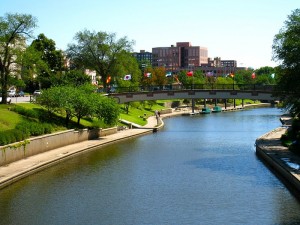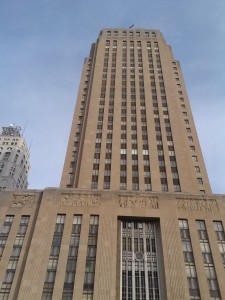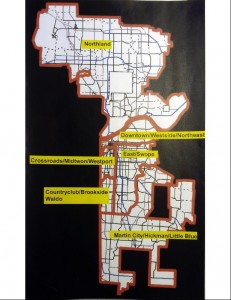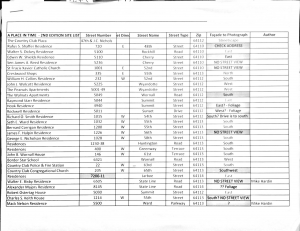By Natalie Walker
In the few weeks since my last post, I have done some research for my internship that has reminded me about why cities are such fascinating urban spaces. Perhaps because they are often concentrated in one area, cities are overflowing with years of history just waiting to be peeled back and discovered. While learning about places that will be added to the book I am working on, A Place in Time, I am constantly reminded that these sites and site introductions are much more than words on a page. Moreover, these places represent so much more than a house with a history or a district with a personality, they represent people and generations of shared human experiences. What is also quite exciting is that while I write about these places I am given the unique opportunity of “going back in time” and picturing places in their original context.
Take for example Brush Creek that runs along the Country Club Plaza. Before its development by J.C. Nichols it looked something like this. Granted, this is still a somewhat manicured depiction, but the swampy creek and the stone certainly dates the picture.
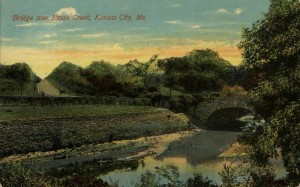 After Nichols’ development to the place and when people started to move into the surrounding area, namely wealthy homebuilders, brush creek began to look like this.
After Nichols’ development to the place and when people started to move into the surrounding area, namely wealthy homebuilders, brush creek began to look like this.
Every time I drive by Brush Creek now I picture it as a dense marshy swamp that was transformed not only by J.C. Nichols, but by everyday Kansas Citians. So what exactly makes Brush Creek so special? What makes the Country Club District so special? Well, for one there is an immense history that surrounds the area: Civil War Battles, famous real estate moguls, exquisite architecture, to name a few. All of these however seem lacking if we forget about the average citizens who created the place and made it what it is today. What started out as a dense tract of brushwood and farmland is now a world famous entertainment district and gorgeous community. Nichols was part of that, yes, but so were the settlers of the area when it was still a dream in the making. People often forget about those that lived in a area before them. I drive by the plaza everyday and never think of it as farmland that Nichols had a vision for and the homebuilders were apprehensive about. Now I see the whole Country Club District in a new way because I know a little of the history, but more importantly I know about the people who were brave enough to settle along the southern city limits and create a truly iconic neighborhood and community.
As I continue to work on this internship, my goal is to remember the people and not just the place. I want to make sure that I tell a story that incorporates the story of the Kansas City citizen, not just the facts about a builder or a real estate developer. Jane Jacobs, author of The Death and Life of Great American Cities wrote, “Cities have the capability of providing something for everybody, only because, and only when, they are created by everybody.” If we think of Kansas City, if we think of the Country Club District as something created by generations of people then we are partaking in history and in a shared human experience.

